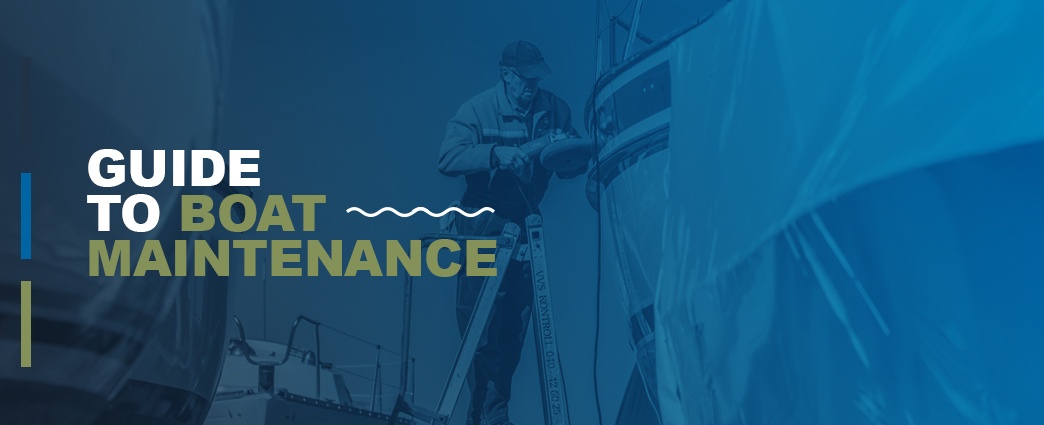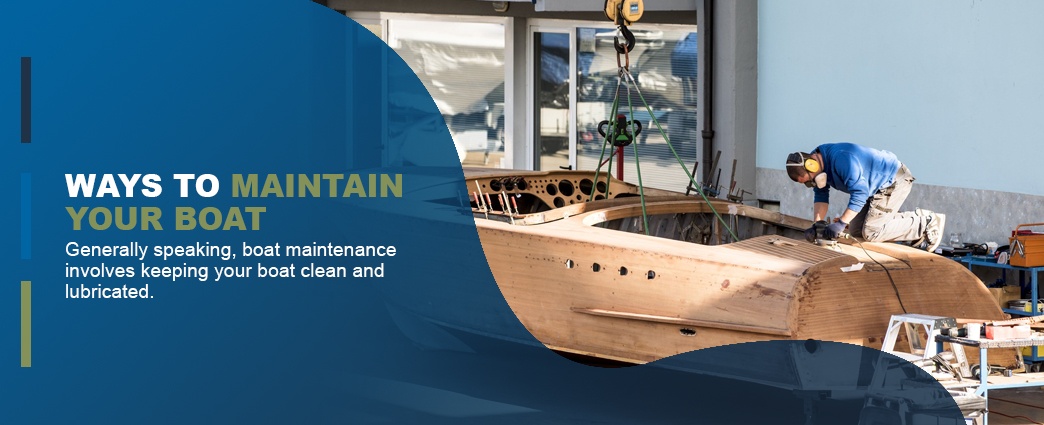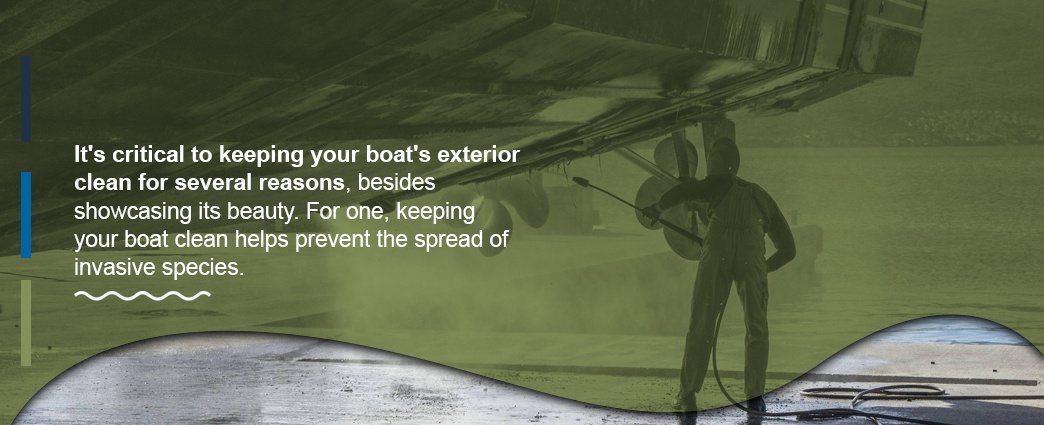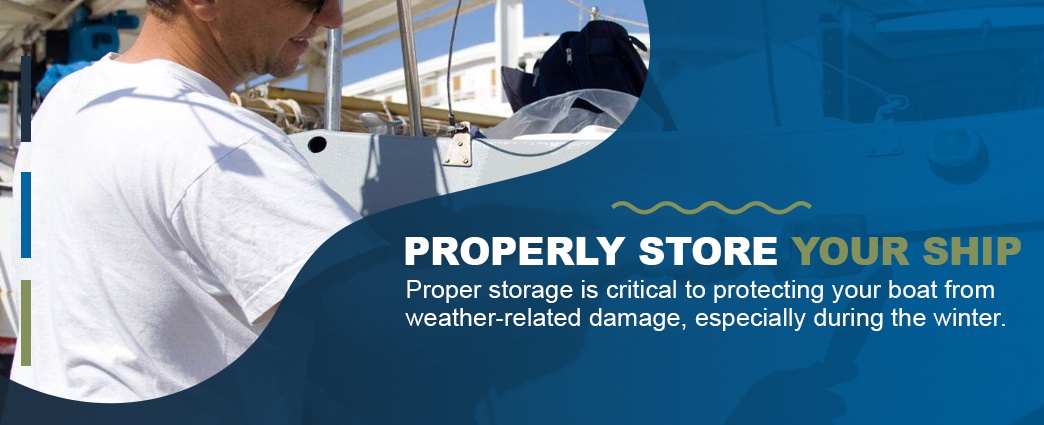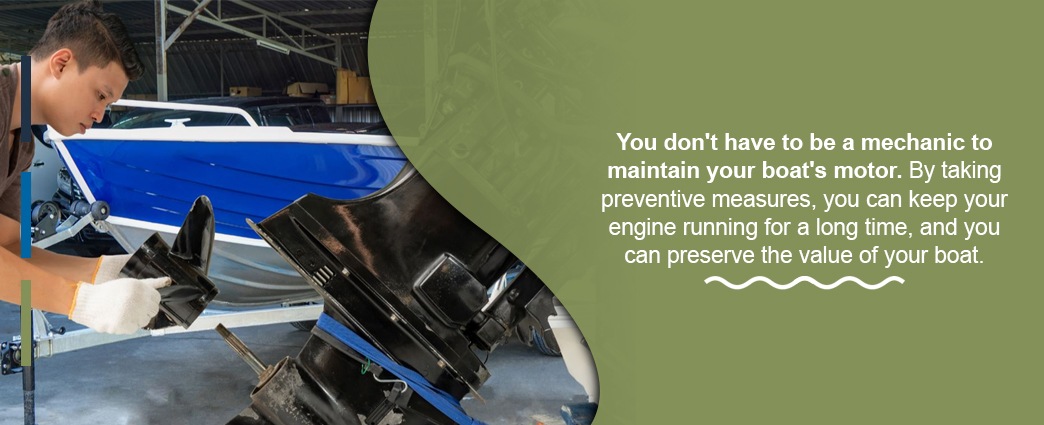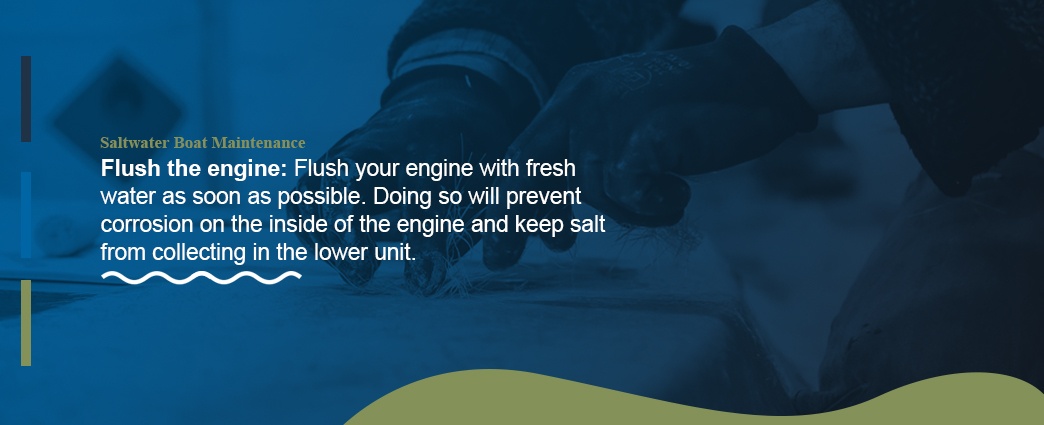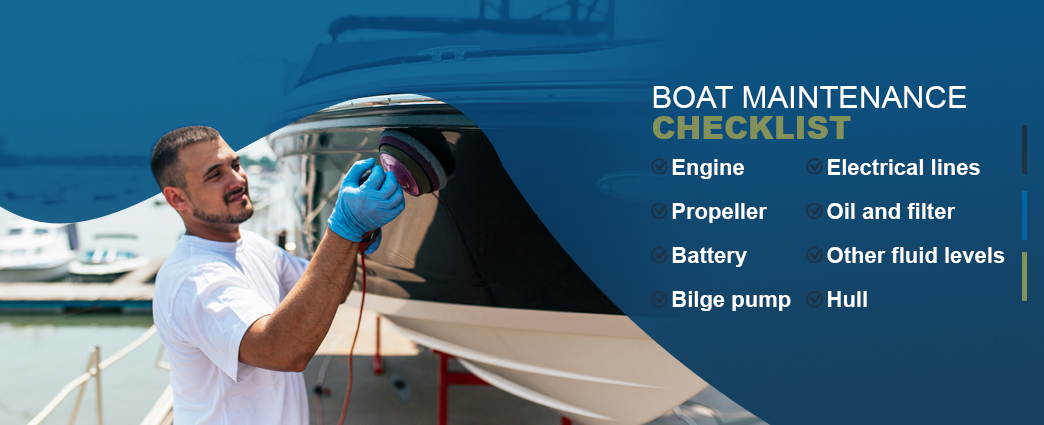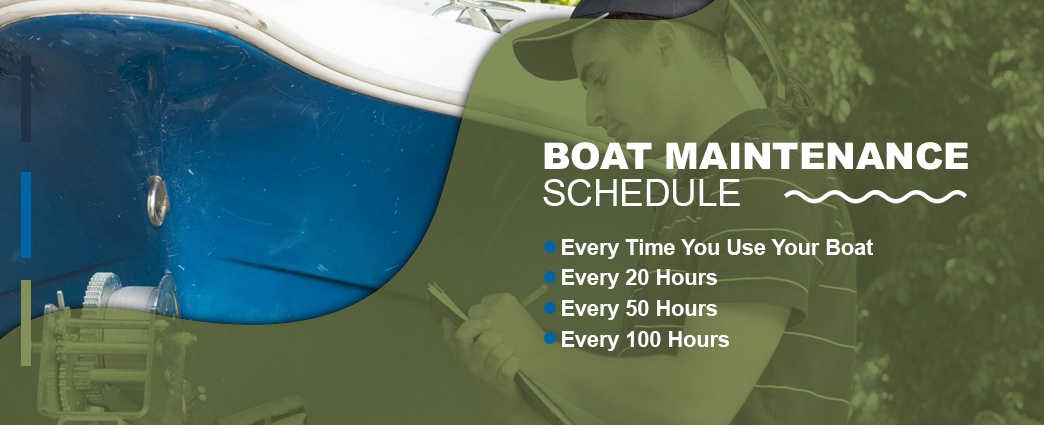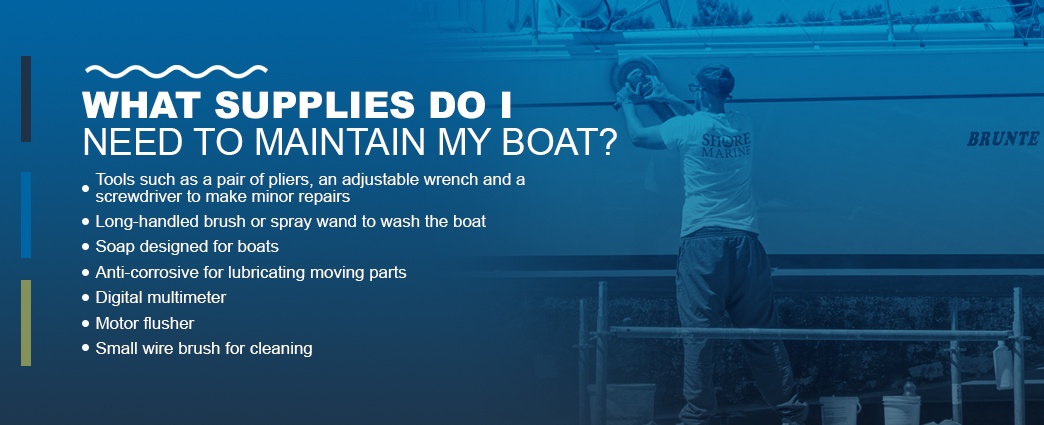Filters
A Complete Guide to Boat Maintenance From EZ Dock
Boats Need Maintained. Find Out How from EZ Dock
Just like our cars, our boats need regular maintenance to run smoothly and safely. With proper boat care and upkeep, you can expect your vessel to last a long time and provide many memories, whether you go boating on lakes, rivers or seas.
Essential boat maintenance goes beyond a visual inspection of your boat every time you head out. You’ll also want to care for your boat after every outing, as well as follow a regular maintenance schedule. Fortunately, many upkeep-related tasks are manageable for most boat owners and do not require a mechanic. However, if you do find you need assistance or a major repair, we recommend turning to the pros so you can enjoy your boat safely. In the meantime, let us help you make the most of your boat.
In this boat care guide, we’ll cover the basics. We’ll show you how to maintain a boat, share boat cleaning tips, answer common questions and more. When you take good care of your boat, you can enjoy a day of water and sky whenever the mood strikes.
Read the full guide below or jump to a specific section:
- Ways to Maintain Your Boat
- Saltwater Boat Maintenance
- Boat Maintenance Checklist
- Boat Maintenance Schedule
- FAQs
Ways to Maintain Your Boat
Generally speaking, boat maintenance involves keeping your boat clean and lubricated. Just as you wouldn’t drive your car without engine oil, you wouldn’t want to take your boat out for a ride without proper fluid levels. Likewise, you probably know weather and debris can damage your car’s exterior over time. The same principle applies to boats. For example, a fiberglass boat with a dirty exterior will turn chalky if you don’t wash and wax it regularly.
To help you keep your boat sparkling and in great shape, we’ll show you how to clean a boat in the next section. We’ll also cover proper storage options and boat motor maintenance.
1. Clean the Exterior
It’s critical to keep your boat’s exterior clean for several reasons, besides showcasing its beauty. For one, keeping your boat clean helps prevent the spread of invasive species. You never know what plant or animal hitched a ride on your boat, so it’s essential to clean your boat every time you remove it from one body of water to protect the next body of water you launch it in.
Secondly, keeping your boat clean protects the structure of the boat by keeping the finish intact. Over time, the salt from the sea will begin to erode, causing abrasions and scratches that could be costly to remove.
Lastly, a clean boat simply performs better. A dirty hull can increase fuel costs by as much as 30%.
Aim to clean your boat on land to prevent polluting the water if possible. If you need to clean your boat in the water, use safe products and avoid toxic substances. No matter where you clean your boat, you will need to rinse it with fresh, clean water to remove the salt.
Not sure where to start in the cleaning process? Here are some additional cleaning tips for different types of boat materials.
- Fiberglass: Most fiberglass boats have a glossy gel coat finish that protects the fiberglass from salt, sun and other weather elements. You can tell that a gel coat finish needs attention when it takes on a chalky appearance. To keep your fiberglass boat in good condition, make sure to wax or polish it with waxes designed to protect the gel coat. Aim to apply a coat of wax twice a season, preferably in the spring and before you store your boat for the winter. Other than waxing your boat occasionally, make sure to wash away dirt and salt after every outing. Use soap designed for boats and a gentle brush or sponge.
- Canvas: Canvas is the general term used to describe the fabrics used in cockpits, boat covers and other parts of the boat. Proper care will keep canvas looking great, and will help the material last longer by keeping its waterproofing properties intact. You can clean canvas using a light brush, mild soap and fresh water. If your canvas has polyvinyl chloride (PVC) windows, never clean the PVC with ammonia-based products. Ammonia will damage the material over time, so it’s best to clean clear PVC with a specialty cleaner.
- Upholstery: You likely have vinyl-covered seating in your boat, since vinyl is durable and easy to clean. Regularly wipe down and clean the seats in your boat to prevent dirt buildup, mold and mildew. Wet a sponge with mild, soapy water, wipe down the seats, wipe away soap residue with a clean, damp cloth, then dry the seats with a clean, soft cloth. If possible, keep the vinyl seats covered or stored away between outings.
- Woodwork: Though wood is typically less common in modern boats, older boats may have some woodwork in handrails, steps, decks or other parts of the boat. Usually, these wooden components are teak, which is a durable tropical hardwood. Clean the teak occasionally with the mildest cleaner designed for teak. Using a soft bristle brush, lightly scrub the teak going across the grain to help keep it in top condition.
2. Properly Store Your Boat
Proper storage is critical to protecting your boat from weather-related damage, especially during the winter. The point is to keep ice, snow and rain out of your boat, while at the same time allowing airflow, so mildew doesn’t build up. You’ll also want to prepare your boat for weeks of inactivity, so it functions properly when it’s time to set sail again. Here are some storage options to consider.
- Outdoor: Outdoor storage is a popular method and allows boat owners to store sailboats with the masts up. Outdoor storage requires a proper cover to protect your boat from the elements. The best way to keep your boat outdoors is to hire a professional to shrink-wrap your boat. Proper shrink-wrapping ensures your boat remains covered and ventilated at the same time. You can cover your boat yourself by fitting a tarp over a wooden frame and placing this over the boat.
- Indoor: Indoor storage is an excellent option because it protects your boat from the weather and the sun. If you do not have room to store your boat in your garage, consider renting a storage unit for the winter. You might also consider dry-stack storage. If you store your boat at a dry-stack storage facility, you’ll keep your boat on a rack in a covered building — just be sure to choose a secure building.
- On the water: Many harbors offer boat storage in the water year-round. Bubblers or de-icers, which bring warmer water from the bottom up to the surface, can protect your boat against ice. Storing your boat on the water may be a practical option if you have a larger vessel and deep water.
Once you’ve decided where to store your boat, follow these tips to prepare your boat for storage. You’ll reduce the amount of work you’ll need to do when it’s time to sail:
- Properly clean your boat.
- Replace cracked hoses.
- Lubricate spark plug holes.
- Replace inline fuel filters.
- Fill the tank to at least 90% and add anti-bacterial stabilizing agents to the fuel.
- Disconnect the battery and store it in a cool, ventilated area.
- Remove all food, carpets and electronics.
- Clean the propeller and shaft and inspect them for damage.
- Apply grease to the shaft.
- Open the drain plugs to allow precipitation to drain out.
- Leave water faucets and valves open.
- If the boat has a refrigerator, keep the door open.
- Flush the engine, water lines and water tanks with fresh water to remove the salt.
- Top off the antifreeze.
3. Prioritize Boat Engine Maintenance
You don’t have to be a mechanic to maintain your boat’s motor. By taking preventive measures, you can keep your engine running for a long time, and you can preserve the value of your boat. Before you perform engine maintenance, it’s a good idea to check your manufacturer’s recommendations first. With that said, here are a few general tips for caring for an outboard motor before every trip:
- Check that you have fuel and that the fuel tank vent is open.
- Make sure the engine mount screw clamps are tight and secure.
- Ensure the water intake is free of debris.
- Check your propeller for caught fishing line and excessive oil buildup.
After every single trip, whether you travel in saltwater or freshwater, you’ll want to flush the motor to eliminate sand, dirt and other debris. To do so correctly, take these steps:
- Buy “earmuffs” or a motor flushing attachment.
- Slip the earmuffs onto the water intake and attach a garden hose.
- Start the engine and allow the water pump to do the work.
- While you’re cleaning your motor, make sure the water pump has good flow by carefully feeling the temperature of the water stream.
- The water shouldn’t be hot, and the output should be strong.
- If the water pump isn’t functioning properly, shut the engine down and insert a piece of wire into the flow tube to remove debris.
- Restart the engine and re-check the flow — if the output is still weak, it’s time to replace the water pump.
- After flushing the engine, disconnect the fuel line.
- Allow the engine to burn all the fuel in the carburetor.
- Turn off the key and battery switch.
- Wipe everything down and spray with an anti-corrosive agent.
- Replace the cowling and wipe it down.
- Keep a canvas or plastic cover on the motor between trips.
Here are more boat maintenance tips to apply regularly:
- Replace spark plugs as needed.
- Regularly check for water in the fuel.
- Keep an eye on the engine’s oil level.
- Check the fuel lines for cracks and wear.
- Check the propeller and engine belts for wear, and replace them as needed.
- Replace damaged fuel hoses.
- Check the fuel primer bulb for cracks.
- Inspect clamps for rust.
- Make sure the tank vent is clear, with no blockages.
Saltwater Boat Maintenance
Salt accelerates corrosion, so it’s especially crucial to follow a maintenance routine if you take your boat on saltwater. There are two critical tasks you should complete after exposing your boat to seawater. Try to do the following as soon as possible after saltwater exposure, or at least within 24 hours.
- Clean your boat: Wash your boat with fresh water to remove salt residue and protect its finish. You’ll also want to clean the seats with water and soap to remove salt and dirt. If salt remains on your boat for too long, it can start to corrode metal components.
- Flush the engine: Flush your engine with fresh water as soon as possible. Doing so will prevent corrosion on the inside of the engine and keep salt from collecting in the lower unit.
If you have an outboard motor, flush your motor using the above engine maintenance tips. If you have an inboard boat engine, you can easily flush the motor by taking these steps and using an inboard motor flusher:
- Hook up a hose up to the motor flusher.
- Place the flusher over the water intake hole.
- Turn on the engine.
- Allow the water to pump through the engine as it idles.
- Watch the water coming out.
- Once the water flows out clear, you’ll know your engine is clean.
- Turn off the engine and water supply, and remove the hose.
Boat Maintenance Checklist
We have already covered a lot about how to maintain a boat, from prepping your boat for storage to flushing the engine. To narrow things down even further, we put together this basic boat maintenance checklist. Having a boat maintenance checklist helps you keep track of the parts of your boat that need attention. Check the items on this list as often as possible, and you’ll enjoy peace of mind throughout your voyage.
- Engine: Periodically look over the engine and check for cracked hoses and loose belts, which you should replace immediately. Look for corrosion, and make sure the outboard motor is securely in place.
- Propeller: The propeller is critical for performance and fuel economy. If you have an outboard or stern drive motor, you should always check the propeller before you launch. Make sure the propeller nut is secure, and tighten it with a deep socket wrench if needed. Look for any damage such as small dents, which could cause you to burn extra fuel. A couple of times a year, remove the propeller to grease the shaft and make sure nothing has gotten wrapped around it.
- Battery: Your boat’s battery is the heart of your boat. Without the battery, your engine won’t start, and electrical components won’t work. Take good care of your battery and check it at least once a year, or more often during boating season. Note that batteries naturally degrade over time, so this is something you don’t want to neglect. Check the battery’s charge with a digital multimeter, and inspect the connections for corrosion. Use a wire brush to clean the connectors if needed.
- Bilge pump: The bilge is the bottom part of the boat that collects excess water, and the bilge pump is the part that removes water from the bilge. If the bilge pump doesn’t work, your boat could sink. To keep your boat afloat, check the pump hoses for debris that could cause clogs. Also, consider adding a backup bilge pump.
- Electrical lines: The electrical lines need to be in good condition to keep the electrical system on your boat up and running, and deteriorating lines could be a fire hazard. To prevent electrical lines from wearing down, keep them clean, and use a digital multimeter to make sure everything’s working right.
- Oil and filter: Stay on schedule with changing the oil and oil filter. Failing to change the oil could damage engine parts. To change the oil, let the engine run for about seven minutes, then turn it off. Next, place a container under the drain plug. Remove the drain plug and loosen the screw above. Let the oil drain out for about 30 minutes. While the oil drains, change the oil filter. After the oil has drained out, replace the drain plug and tighten the screw. Fill the engine with the proper oil.
- Other fluid levels: To make sure your boat runs properly, remember to periodically check other fluid levels such as power steering fluid and coolant.
- Hull: Inspect the hull and look for cracks or blisters. Make sure drain plugs are in place.
Boat Maintenance Tasks
For many boat owners, most of their boat maintenance tasks take place in the spring, to prepare their boats for a new boating season. Proper maintenance before your boating season ramps up is crucial for improving the performance of your boat and sets the stage for the maintenance you have to perform throughout the season. To help improve your maintenance checklist throughout the boating season, be sure to complete these boat maintenance tasks in the spring:
- Check for and replace deteriorating anodes: Anodes are sacrificial metal pieces that protect the boat’s underwater metal components from galvanic corrosion. The anodes will disintegrate over time, which means you’ll need to replace them. Once they’re about half dissolved, it’s time to change them. If you let them go too long, you risk damage to the other metal components.
- Inspect your propellers: Inspect your boat’s propellers for distortions that could cause excessive vibrating. When this occurs, screws and pins can loosen, causing more damage or resulting in the propeller falling off underwater. Ensure everything is in good condition, all pins are in place and screws are secure.
- Inspect cable jackets: Cable jackets protect the electrical components of your boat. If the jacket is cracked or swelling, it’s corroding and needs to be replaced. Proper replacements are crucial because if the cables fail, you could lose control of the boat.
- Test the bilge pump: Ensure the bilge pump system works properly. To do this, put some water in the bilge and test the pump to see if it removes it. If not, be sure to get it fixed before heading out on the water.
- Inspect safety gear: Check the expiration dates on your fire extinguisher and flares. Replace them if they’re past the date. Ensure they’re in dry areas and easily accessible if you need to use them. Test carbon monoxide and smoke alarms if you have them.
- Check the fuel and electrical systems: Check the fuel lines for soft spots, cracking and brittleness. Look for stains and the smell of fuel around fittings since these are signs of leaks and replace them as necessary. Keep the electrical system clean and ensure all connections are tight to prevent fire hazards.
Boat Maintenance Schedule
To ensure you are properly caring for your boat year-round, it helps to keep a schedule. When you stick to a maintenance schedule, you’ll be less likely to forget critical tasks. This maintenance timeline from the Boat Owners Association of the United States is a good place to start.
1. Every Time You Use Your Boat
Whenever you’re about to launch, make sure to complete the following tasks:
- Check the oil and top it off, if needed.
- Check the propeller for damage.
- Check steering movement.
- Check the hull for damage and repair if needed.
- Wash the hull and deck.
- Check the bilge pump.
- Check the battery for a proper charge.
- Ensure the electric systems work properly.
- Check the fire extinguishing systems.
2. Every 20 Hours
After 20 hours of use, complete the following maintenance tasks:
- Check the lower unit for water and refill oil if needed.
- Treat the fuel with decarbonizer.
- Check the engine for proper RPM.
- Clean and protect the interior.
3. Every 50 Hours
Every 50 hours of use, add these items to your to-do list:
- Check fuel lines for degradation.
- Check the steering system fluid level and look for leaks.
- Wax and polish the hull and deck.
- Clean the bilge pump.
4. Every 100 Hours
After 100 hours of boating, make sure to do the following:
- Lubricate grease points.
- Check the power trim and tilt fluid and refill if needed.
- Tighten all accessible bolts and fasteners.
- Touch up paint.
- Check the engine mounts.
- Replace the water pump impeller.
- Replace oil and fuel filters.
- Check bow and stern eyes for secure mounting.
- Check the rub rail for damage.
- Have a professional mechanic inspect your boat.
FAQs
Before we conclude our boat maintenance guide, here are a few frequently asked questions to help you jumpstart your boating adventures.
1. How Do I Get My Boat Ready for Summer?
Generally, you’ll want to do a thorough maintenance check after you take your boat out of storage and prepare for summer fun. Here’s a brief list of top tasks to complete.
- Clean: Wash and wax your boat.
- Empty the bilge pump: Pump out any water from melted snow or rain.
- Charge battery: Make sure your battery has a strong charge.
- Perform a safety check: Check all lights, the horn and safety equipment. Replace batteries in smoke alarms and carbon monoxide alarms.
- Change the oil and check fluid levels: Change the oil after winter, and check other fluid levels.
- Check registration: Make sure your registration is up to date, and the sticker is in place.
- Put the drain plug back in: Don’t forget to put the drain plug in if you took it out over the winter.
2. What Supplies Do I Need to Maintain My Boat?
You can get away with owning just a few supplies and tools to practice basic boat maintenance. Otherwise, you may have to find tools for specific projects or more involved repairs. Here are some items to have on hand:
- Tools such as a pair of pliers, an adjustable wrench and a screwdriver to make minor repairs
- Long-handled brush or spray wand to wash the boat
- Soap designed for boats
- Anti-corrosive for lubricating moving parts
- Digital multimeter
- Motor flusher
- Small wire brush for cleaning
3. Do I Need to Change My Boat Oil Every Year?
Experts recommend changing the oil for a gas boat engine once a year or every 100 hours. Changing your oil extends the life of your engine, so you may want to change it more often than what the manufacturer recommends.
If you have a diesel engine, change the oil every 50 hours or less.
4. How Do You Maintain a Fishing Boat?
If you use your boat for saltwater fishing, you’ll want to wash it after every use to remove the salt. You’ll also want to change the oil and check the propeller for fishing line regularly. Several times throughout the season, remove the propeller and make sure there is no fishing line wrapped around the shaft. If you find fishing line, have a dealer inspect the gear case. Fishing line can cause leaks in the gear case.
Step Aboard With EZ Dock
Proper boat maintenance will keep your vessel running better and longer, and most importantly, create a safe boating experience for you, your friends and your family. When it’s time to embark on a boating adventure, you’ll need a safe way for you and your boating companions to step aboard. A durable, easy-to-use dock or boat lift system can make anyone feel comfortable getting onto your boat.
If you’re looking for a premium floating dock at a great price, reach out to us at EZ Dock. Our floating walkway docks are perfect for the family boater and provide easy access to the boat, whether you’re ready to sail or need to perform boat maintenance. Our docks are easy to maintain, and unlike wooden or metal docks, they are free of splintering and rust. To learn more about our superior-quality boat docks, dock accessories, dock sections, boat ports, and PWC Ports for your waterfront property or business, contact your nearest EZ Dock distributor today!

